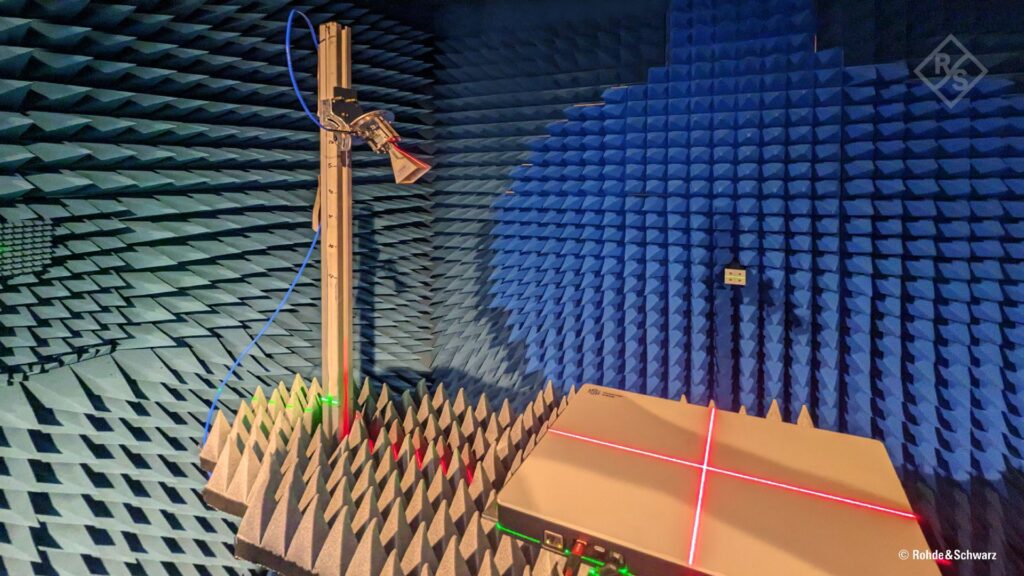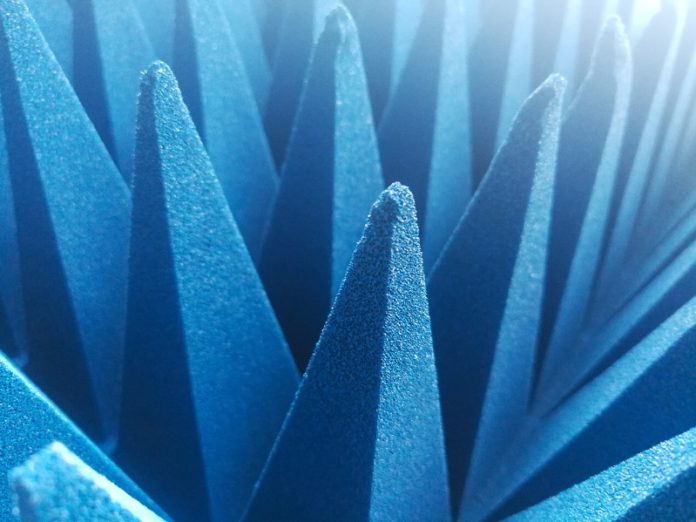Rohde & Schwarz partnered with French start-up Greenerwave on a recent measurement campaign for reconfigurable intelligent surfaces (RIS), which are being explored as part of development for both 5G millimeter wave and future 6G systems.
Both companies are part of the one6G alliance and ETSI’s ISG RIS group.
The measurement campaign focused on characterizing the configurable radio wave reflection properties of a novel millimeter-wave module from Greenerwave, using an over-the-air test system from R&S. Greenerwave’s RIS consists of many layers and a surface inlaid with “patch antennas” whose responses can be controlled; it covered a bandwidth of 25-30 GHz with instantaneous bandwidth of 2 gigahertz, according to Rohde & Schwarz, and the beam width can be as narrow as three degrees. Measurements focused on reflection characteristics and reflection quality in three dimensions.

Testing RIS modules means that you need a test environment that can both illuminate the RIS from different incident angles as well as measure signals at multiple angles, Rohde & Schwarz explained; so the RF test chamber needed a specially designed holder for the Greenerwave RIS (pictured above in a photo provided by Rohde & Schwarz).
The test company called the work “one of the first real measurements confirming that a metamaterial-based RIS can improve the coverage and efficiency of wireless communications performance,” especially in the 5G millimeter-wave range.
“The groundbreaking work will pave the way for further 6G developments,” Rohde added. RIS use metamaterials to “control the otherwise random radio environment;” these materials “enable unprecedented control over [electromagnetic] waves by manipulating the impedance on a subwavelength scale and have led to significant breakthroughs in imaging, radar and wireless communications,” the company noted.
“We believe in our RIS technology and its capabilities to develop new 5G FR2 use cases. Our collaboration with Rohde & Schwarz is an important step in proving that our RIS meets the 5G requirements using professional OTA equipment,” said Geoffroy Lerosey, CEO & CSO of Greenerwave, and Youssef Nasser, head of the company’s 5G/6G business unit, in a joint statement. “In the near future, we will explore new opportunities that help shape the technology development in 5G advanced and beyond.”
Earlier this week, Chinese vendor ZTE announced that it had partnered with Advanced Info Service (AIS), Thailand’s largest mobile operator, to accomplish what the partners claim to be the world’s first dynamic reconfigurable intelligent surface (RIS) trial in a mmWave network at the AZ center in Bangkok. More details on that story here.
In other test news:
-David Adams, who is director of market development for critical communications test and measurement products at PCTel, was named president of the board of directors of the Safer Buildings Coalition.
-The Platforms for Advanced Wireless Research (PAWR) program has officially taken live its fourth and final testbed in central Iowa, which combines both commercial and programmable network systems and is focused on exploring wireless use in rural environments. The Agriculture and Rural Communities (ARA) testbed, first announced back in 2021, uses backhaul and radio access gear from Aviat, Ericsson, Skylark Wireless and NI. More details in the full story.
-IoT module maker Quectel has expanded its research and development facility in Penang, Malaysia. The location, which also has manufacturing facilities, has added a state-of-the-art testing lab and anechoic chamber and says that the location now offers an environment suited for “exhaustive testing, debugging, and customer device evaluations.”
–Teledyne LeCroy has debuted a new oscilloscope platform for serial data connection testing, including USB4 and PCI Express, as such testing needs to support both faster speeds and additional complexity. The new WaveMaster 8000HD family includes models ranging from 20 to 65 GHz of bandwidth, with 12 bits of resolution and up to 320 GS/s of sample rate.
–Spirent Communications’ test solutions supported H3C in what the two companies described as the industry’s first large-scale, high-density 800G Ethernet test with up to 64 800G ports, in order to validate the performance and reliability of H3C’s 800G CPO silicon photonic switch series.
“We were pleased to support H3C in verifying multiple breakthrough technology solutions for 800G Ethernet,” said Andrew Liu, VP of Sales for Spirent in Greater China. “We have developed a comprehensive, end-to-end 800G testing suite that leverages decades of experience in Ethernet testing. This latest positive 800G test validating the reliability and high performance of H3C S9827, H3C’s 800G CPO silicon photonic switch series, will help ensure successful deployments of this complex new technology and reliable high-speed networks to meet future demand.”
-A Cleveland-based company has won work from NASA to test radio frequency antennas for space-based, millimeter-wave communications. Teraphysics describes its technology as a “miniaturized, high power, highly efficient millimeter-wave [traveling wave tube, or TWT] amplifier”, which it says will enable communications in E-band spectrum at 71-86 GHz to provide high-capacity links for military, terrestrial communications and inter-satellite links. The devices are the size of a business card, according to Teraphysics, and they weigh less than one pound and are designed to output from 10s to 100s of watts of linear power.
The agreement allows the company to characterize, certify, and qualify its patented miniaturized TWT for “RF communications that could be incorporated and used in future LEO constellations and existing 5G, 6G and future wireless terrestrial communications.” Teraphysics said that testing is expected to start this quarter, with completion expected by the second quarter of 2025.

